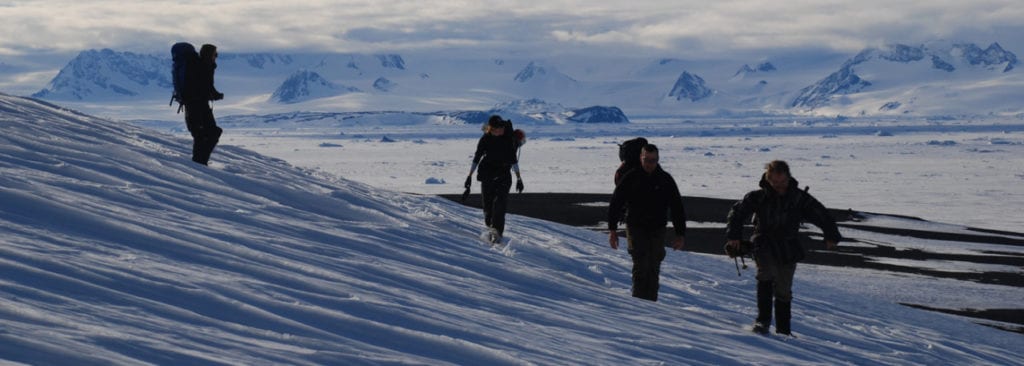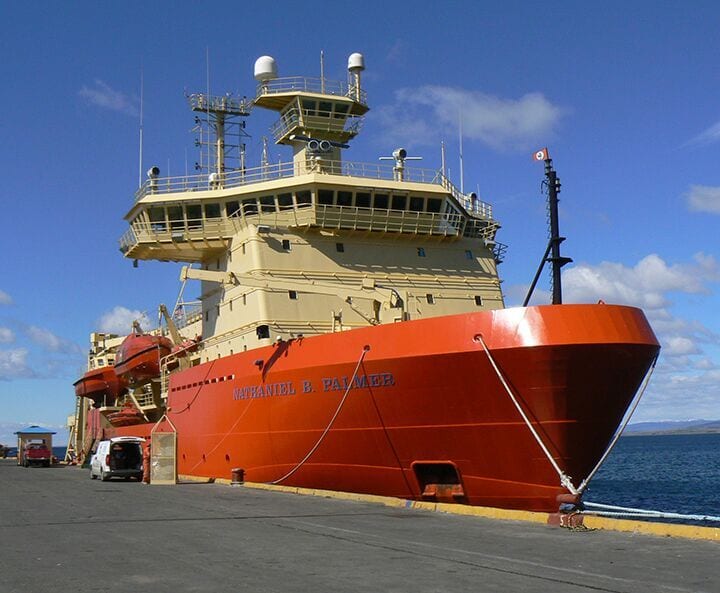

Expedition Antarctic: Peninsula Paleontology Project 2016
Begins February 2, 2016
With support from the National Science Foundation and the United States Antarctic Program, Matt Lamanna, paleontologist and the principal dinosaur researcher at Carnegie Museum of Natural History in Pittsburgh, along with his esteemed team of experts, will conduct a lengthy field expedition to the James Ross Island area of Antarctica from February 2 to March 24, 2016.
This expedition, to be supported by the research vessel RVIB Nathaniel B. Palmer, will be outfitted with Zodiac inflatable boats, a metal-hulled landing craft, and two helicopters that should collectively allow access most or all of our sites of interest. The team consists of 12 scientists, including seven paleontologists, two sedimentologists, and three paleontology graduate students. As a general rule, eight team members will typically be divided between two field camps, while the remaining four conduct short reconnaissance forays to other sites via helicopter or watercraft. Camps will be established at Sandwich Bluff of Vega Island, Ula Point and the Naze of James Ross Island, and possibly one additional area to be determined. Sites to be targeted for reconnaissance or focused collecting include two regions on the north coast of Vega Island, localities on northwestern James Ross Island (e.g., Dreadnought Point, Blancmange Hill), Cape Wiman of Seymour Island, Tesore Hill and (possibly) the Sanctuary Cliffs and Dingle Nunatak of Snow Hill Island, and Cape Marsh of Robertson Island.
Given the resources being allocated to this expedition, and the highly experienced nature of the field team, along with the combination of proven localities with less-explored areas, they expect to make significant paleontological and geological discoveries. In turn, these finds should allow their project to make substantial contributions to scientific understanding of Antarctic faunas and environments during the crucial interval immediately prior to the mass extinction that ended the Age of Dinosaurs.
Read background, bios and blog at
